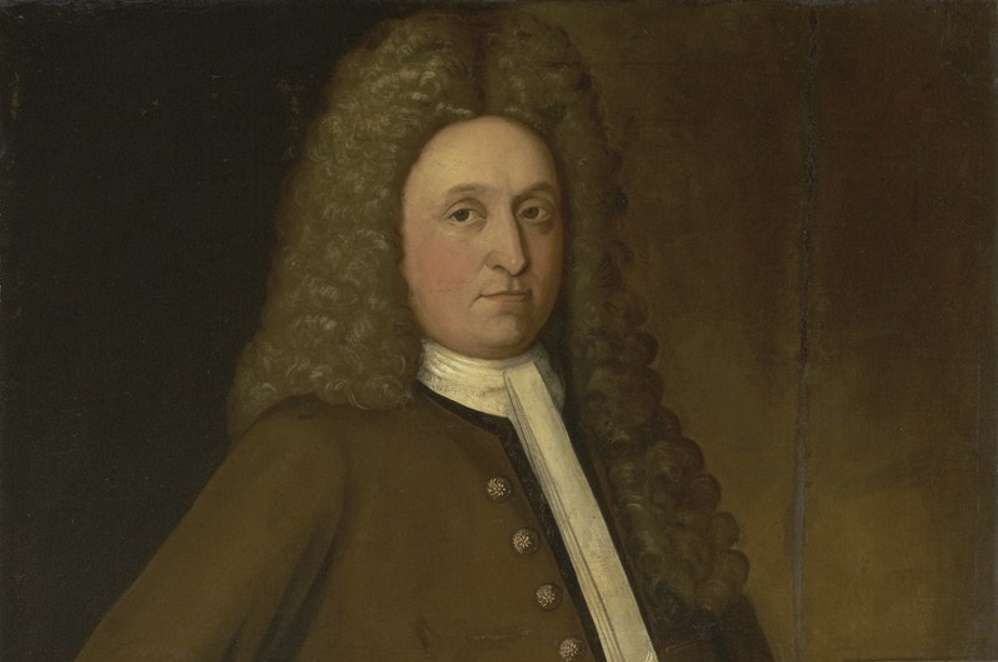The Rogerenes were an unusual group of religious dissenters formed in New London, Conn., in the late 1600s. They took their name from their founder, John Rogers, Jr., who came from a well-to-do New London family.
The story most often told about the Rogerenes involves Gurdon Saltonstall, who would later serve as governor of Connecticut.
Saltonstall, as minister in New London, was the most common target of the Rogerenes. The sect was discourteous and abusive toward the established church, while simultaneously maintaining a sympathetic following in town.

Gurdon Saltonstall
As the story goes, a man and woman came to visit Saltonstall during his dinner. They announced to him they had married in the Rogerene tradition, outside the church and outside the control of civil authorities. Faced with this deliberate flaunting of authority, what did Saltonstall intend to do about it, they demanded to know?
Saltonstall had a simple answer. Using his powers under the state and church, he declared them legally man and wife and went back to eating.
Historians haven’t managed to nail down the details of the story. It’s been told many times and with minor changes in the specifics. But it seems to perfectly capture the relationship between the official New London church and its chief critic, John Rogers and his Rogerenes.
Birth of the Rogerenes
Rogers was born in 1648. As a young man, his family began to flirt with the Baptist faith. By 1674, Rogers had staunchly opposed the Congregational Church, and he launched his own career as a minister. His followers, the Rogerenes, had a collection of beliefs culled from other faiths. Like Quakers, they believed in silent worship and prayer. Like Baptists, they believed in adult baptism by immersion and celebrating communion in the evening.
The Rogerenes also believed in Sunday worship, but didn’t believe in postponing work for the entire day. And they believed they should not have to pay taxes to support the Congregational Church.
Unlike some other dissenting faiths, however, the Rogerenes went out of their way to provoke the church. Rogers’ followers, which included a small group of his family and friends, would march through New London on Sunday, noisily proclaiming that they were working on the Sabbath. They would attend meeting at the church and disrupt the services and argue theology with the minister, Saltonstall.
For their protests, Rogers and his followers were frequently hauled before the courts. They were fined repeatedly and imprisoned. In 1695, Rogers was tried at Hartford for disrupting a Sunday meeting by entering the meeting house with a wheelbarrow. At another time, he placed his hand on his heart and stated: ‘This is the humane body of Christ.”
His sentence was to stand on a gallows with a noose around his neck for 15 minutes and pay a 5 pound fine. Further, he had to post bond of 50 pounds to guarantee his future good behavior.
Jailbird
No sooner had the trial concluded than the meeting house in New London burned to the ground. Further, someone had desecrated a meeting house in nearby Stonington. Rogers; his aunt, Bathsheba Fox; and his father’s servant William Wright were charged with the crimes and convicted. Rogers would spend nearly four years in prison. This was just the beginning of his legal troubles.
Rogers faced punishment for entertaining Quakers in his home and helping a young man escape from prison. He also married his maid when he hadn’t lawfully divorced his first wife. The list of offenses grew, as did Rogers’ time in prison.
After Saltonstall was elevated to governor in 1708, he had Rogers declared insane. As a result, his jailers removed the windows of Rogers’ jail cell — treatment for insanity at the time. But Rogers’ friends rioted and had the boards removed.
When another Rogerene went to prison for failing to keep the Sabbath, her supporters removed the doors from the New London jail. All the while the Rogerenes continued baptizing people and getting condemned by the church for it.
In 1721, the Rogerenes occupied the New London Meeting House in protest over having been taxed to pay for it. Saltonstall, however, stayed away. When Saltonstall returned, the group repeated the protest, resulting in fresh charges against them.
Faith Healing
Along the way, the Rogerenes had begun embracing a belief in faith healing. When he learned of a 1721 outbreak of smallpox in Boston, Rogers went to the city to visit the sick. Upon his return to Connecticut he developed the disease and died.
The Rogerenes did not die with John Rogers, however. The sect persisted. Saltonstall died in 1724, and the Rogerenes gradually became less of a thorn in the side of the Connecticut government. One group of Rogerenes resettled in New Jersey and started a religious community there. Others took up Quakerism.
The faith was active well into the 1800s. Later Rogerenes were less confrontational in relation to other churches, but they stayed true to their rabble-rousing roots. Rogerenes were among the early opponents of slavery and proponents of women’s rights.
Thanks to The Rogerenes; some hitherto unpublished annals belonging to the colonial history of Connecticut by John Rogers Bolles and Anna Bolles Williams. This story last updated in 2023.
